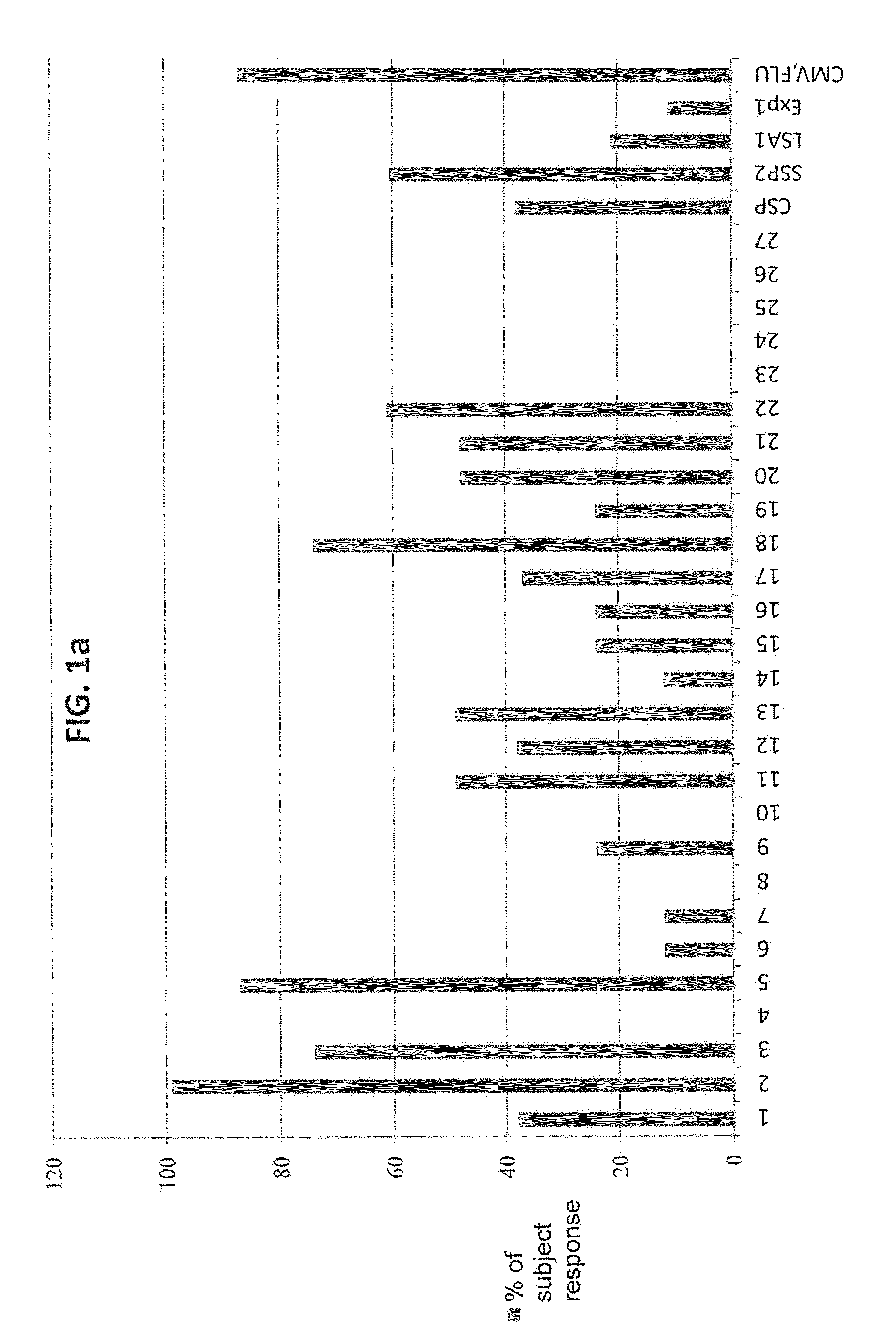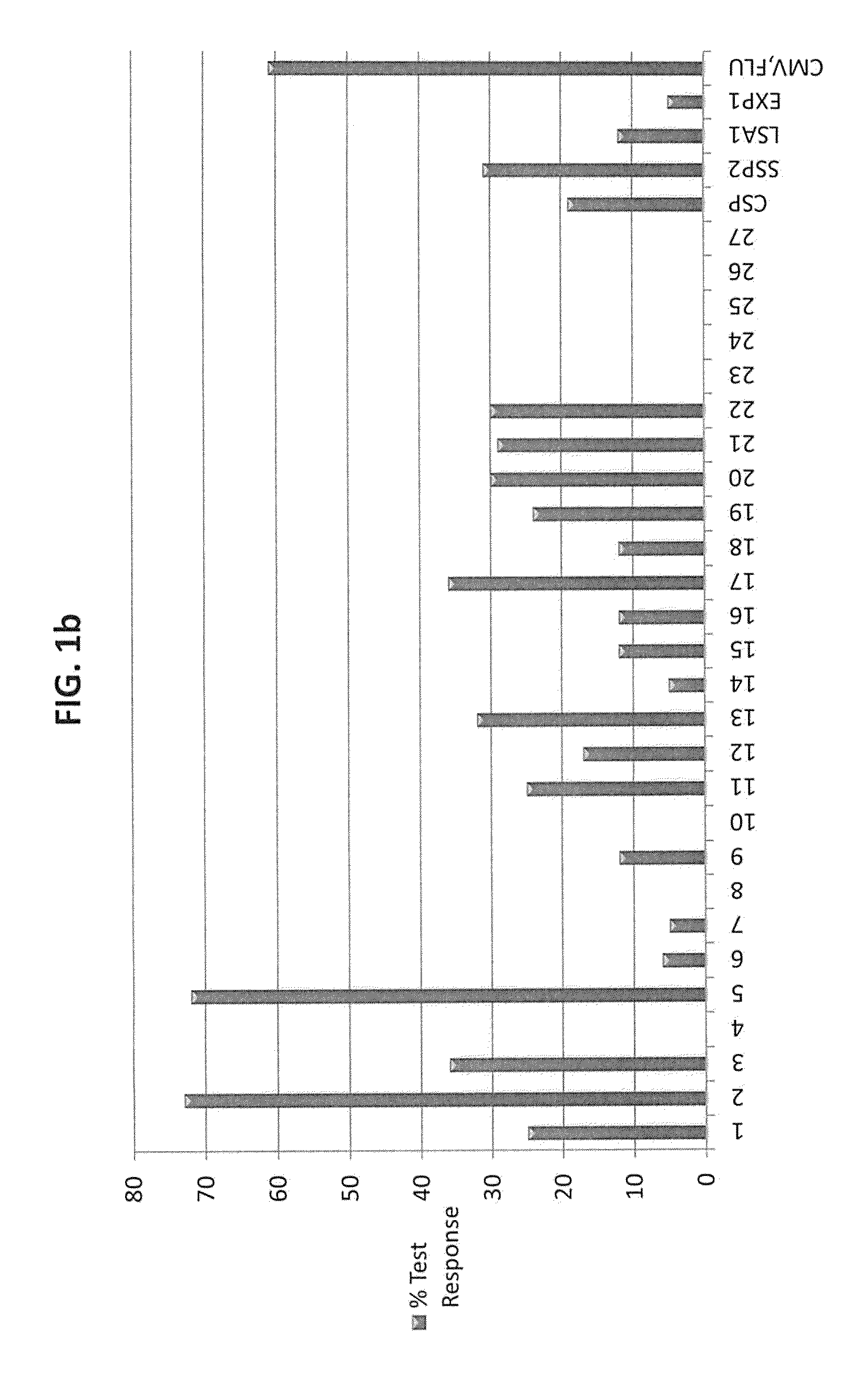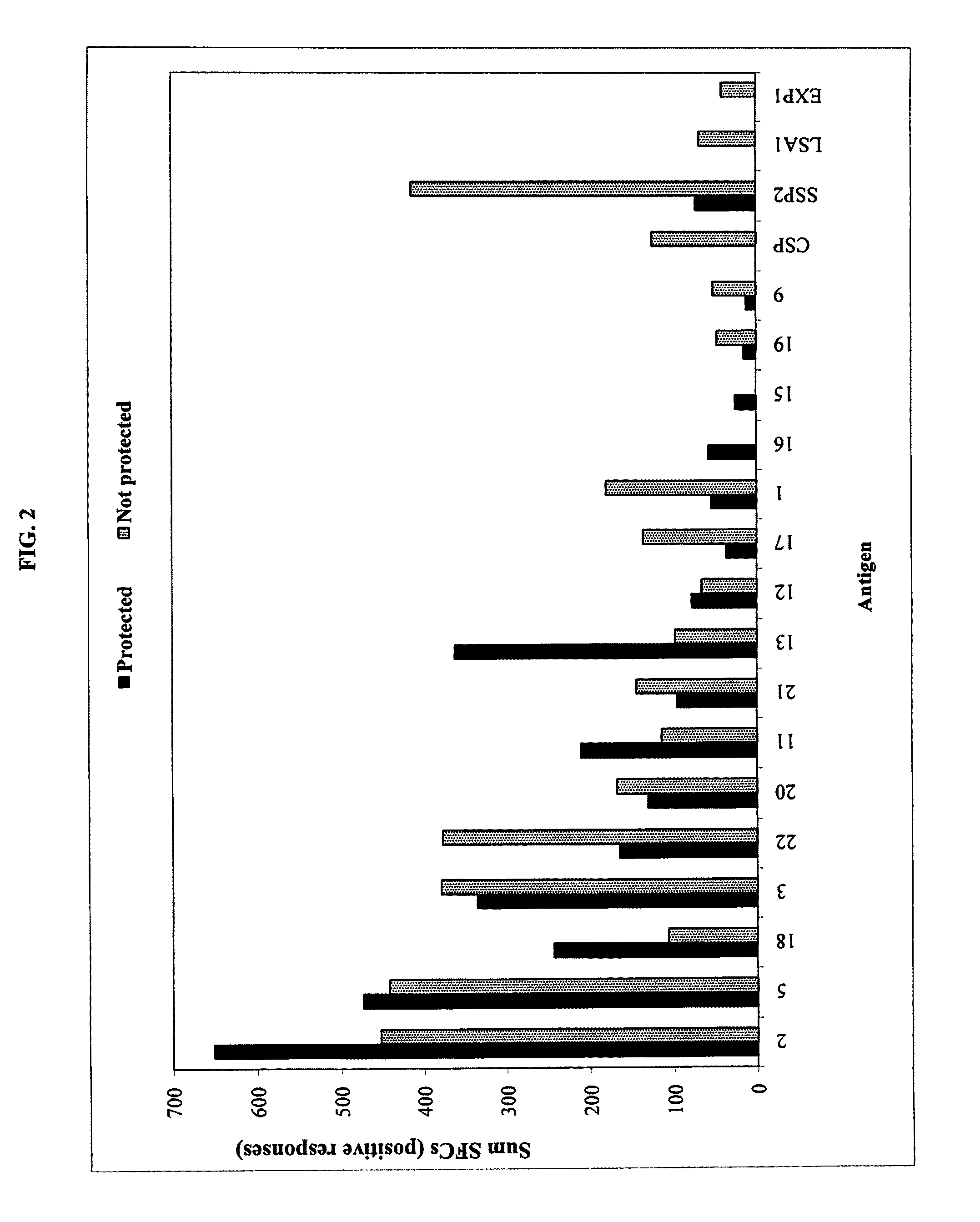Vaccine and immunization method using plasmodium antigen 2
- Summary
- Abstract
- Description
- Claims
- Application Information
AI Technical Summary
Problems solved by technology
Method used
Image
Examples
example 1
Genomic and Proteomic Identifications of Malaria Vaccine Candidate
[0041]The ImmunoSense strategy (Doolan et al. 2003) was designed to identify target antigens and maps T cell epitopes from large and complex genomes, such as P. falciparum, by integrating genomic and proteomic data with bioinformatic predictions, HLA supertype considerations, high-throughput binding assays, and cellular assays. A central component of the strategy is the capacity of the antigen to be recognized by immune responses thought to contribute in protection, allowing for rational antigen selection and prioritization.
[0042]T cells recognize a complex between a specific MHC type and a particular pathogen-derived linear T cell epitope, and a given epitope will thus elicit a response only in individuals who express an MHC molecule capable of binding that epitope. Human MHC molecules are extremely polymorphic, and different HLA types are expressed at dramatically different frequencies in different ethnicities. One ...
example 3
Identification of Orthologs of PfAg2 in Other Plasmodium spp
[0053]No ortholog of PfAg2 could be identified in the annotated P. yoelli genome (Carlton et al. 2002). However, upon scanning the corresponding region along chromosome 12 common stretches of sequence and gene homology was achieved between P. yoelli and P. falciparum. It was noticed that genes flanking Ag2 in the P. falciparum chromosome 12 genome all had orthologs present in P. yoelii. After obtaining the corresponding P. yoelli contig (chrPy1—00049) and scanning for ORFs a previously uncharacterized ORF was identified that shares size (single exon; predicted 185 amino acids for P. yoelii, 182 amino acids for P. falciparum) and sequence identify (44% identity at the amino acid level; 57% identify at the nucleotide level). Subsequently, PfAg2 orthologs were determined in corresponding contigs in P. vivax (185 amino acids; 42% identity at the amino acid level; 54% identify at the nucleotide level) and P. knowlesi (185 amino ...
example 4
Sequence Conservation of Ag2 Relative to Well Characterized P. falciparum Antigens
[0054]The level of sequence identity between the identified Plasmodium spp orthologs of Ag2 is greater than that'observed between PyHEP17 and PfExp-1 (37% identity at the amino acid level), P. falciparum and P. yoelli circumsporozoite protein (26%) (Dame et al. 1984; Lal et al. 1987); P. falciparum and P. knowlesi circumsporozoite protein (25%); and P. falciparum and P. yoelli sporozoite surface protein (28%) (Robson et al. 1999, 1990; Rogers et al. I 992a, b); and similar to that between the P. falciparum and P. knowlesi sporozoite surface protein 2 (36%). There are no known P. knowlesi or P. vivax orthologs of PyHEP17 / PfExp-1, and no known P. yoelii, P. knowlesi or P. vivax orthologs of PfLSA1, so sequence identity between species cannot be assessed in those cases. The level of identity between Plasmodium orthologs of Ag2 is also greater than for leading blood-stage candidate antigens, merozoite surf...
PUM
| Property | Measurement | Unit |
|---|---|---|
| Fraction | aaaaa | aaaaa |
| Fraction | aaaaa | aaaaa |
| Fraction | aaaaa | aaaaa |
Abstract
Description
Claims
Application Information
 Login to View More
Login to View More - Generate Ideas
- Intellectual Property
- Life Sciences
- Materials
- Tech Scout
- Unparalleled Data Quality
- Higher Quality Content
- 60% Fewer Hallucinations
Browse by: Latest US Patents, China's latest patents, Technical Efficacy Thesaurus, Application Domain, Technology Topic, Popular Technical Reports.
© 2025 PatSnap. All rights reserved.Legal|Privacy policy|Modern Slavery Act Transparency Statement|Sitemap|About US| Contact US: help@patsnap.com



